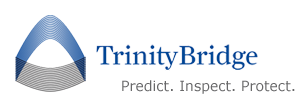After the RBI Study
There are a number of follow-up items that will help improve the quality and accuracy of the typical RBI study. The following list of recommendations may or may not apply to a study based on the level of detail and attention given to the initial study data and assumptions. Typical RBI program studies produces fairly generic inspection plans and cannot provide a detailed plan and risk mitigation without your input and analysis.
1. The assumptions as part of a study must be documented and should be reviewed by you. Any recommendations should be considered as part of follow-up activities.
2. Specific inspection plans should be developed for the individual equipment items requiring inspection. This will typically require an RBI specialist, a materials/corrosion specialist and the unit inspector. Development of a specific equipment inspection plan should consider the following:
a. Highest risk items, starting with the highest risk equipment.
b. Determine the risk driver and cause of driver for each equipment item:
i.Is it related to an assumption or lack of information?
ii. Is it possibly a true corrosion problem where the equipment is near its end of life (usually requires a Fitness-For-Service assessment as a minimum)?
iii. Is it based on an assumed corrosion rate or faulty measured rates?
c. Review the potential for on-stream or non-intrusive inspection in-lieu of internal inspection
i. What are the costs and logistics of an on-stream or non-intrusive inspection?
ii. What are the available inspection techniques and your confidence in the inspection results using the techniques?
3. The RBI studies often rely on estimates of the contaminants within the process stream and, where possible, water sampling and laboratory analysis that will better define the amounts of a contaminant present should be acquired. Considerations for feed stock variability, sampling points and lab analyses should be considered a vital part of an on-going corrosion control program. Further refinement of this data within the RBI program will help to better predict the future equipment condition and fine tune the inspection recommendations.
4. Process modeling can often be performed on-site and can be used to help to more accurately measure H2S concentration, hydrogen partial pressure and stream dew point. Conservative estimates are often used to set concentrations of various elements and the potential presence of a free water phase. In addition, it is difficult to determine whether a water phase will follow the process overhead, bottoms or in some cases side streams of a tower, necessary to define the limits of a specific corrosion potential.
5. Based on a high degree of variability and quality of ultrasonic measurement programs, we are often forced to use our own industry derived, estimated corrosion rates. While assigned estimated rates are intentionally conservative, it is important not to be overly conservative and driving unnecessary inspection due to being too conservative. Estimated corrosion rates should ultimately be replaced with good measured corrosion rate data as you develop confidence in the UT program and results. Using average long corrosion rate data calculated from equipment in a common corrosive environment (or circuit) is recommended. If proper circuitization has not been performed as a part of your thickness monitoring program set-up, piping systemization and circuitization should be considered in the long range follow-up items.
6. The external damage module in API RP 581 is effective with respect to calculating corrosion rates or cracking susceptibilities under normal operating conditions. However, an assumption of the insulation condition and complexity as well as paint quality and age, if applicable all impact the corrosion rate using API RP 581. Follow-up visual inspection to verify the actual conditions is recommended to fine tune the predicted external corrosion model. In addition, equipment subject to multiple operating conditions (such as alternating temperatures from regeneration or other services) must be considered when assigning potential to external damage. In this case, damage may occur in untypical operating conditions but should be considered and inspected.
